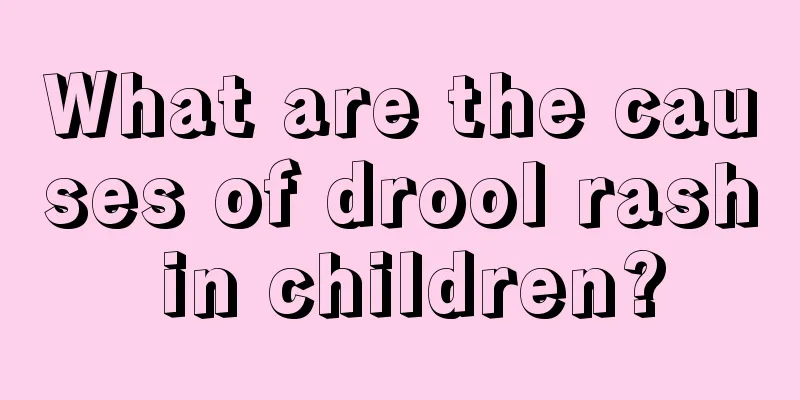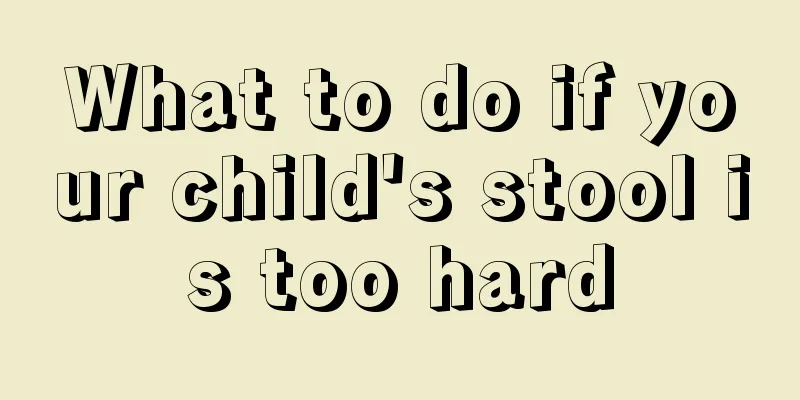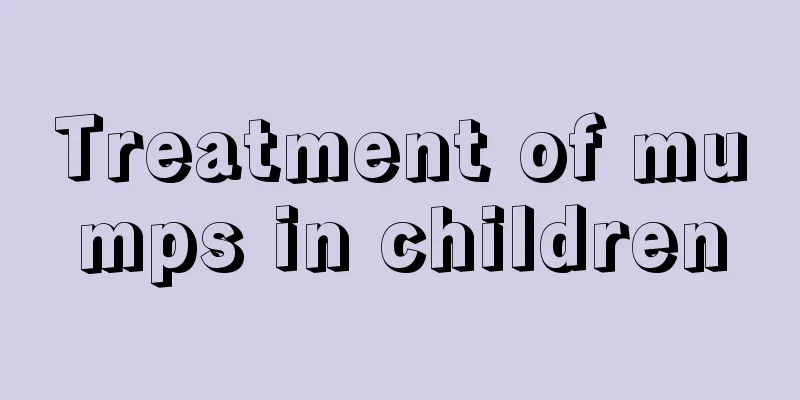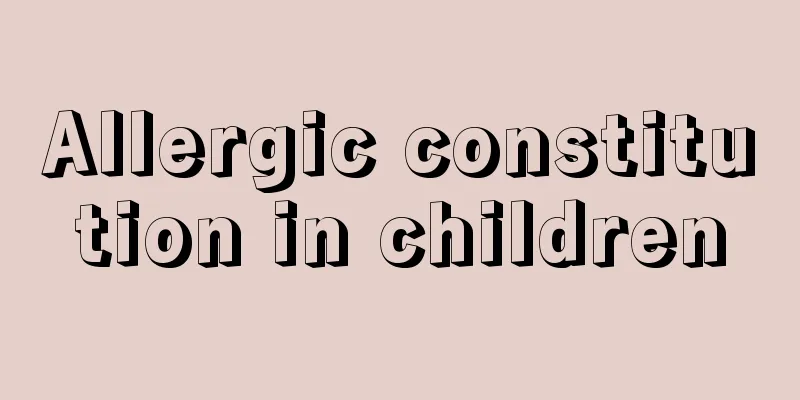What is the reason why children have lumps on their gums?
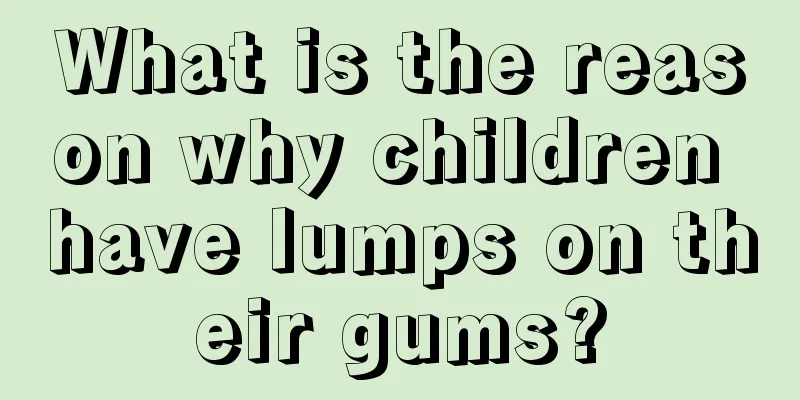
|
If a child has a lump on his gums, he will feel very uncomfortable and may often touch it with his hands. If he touches the lump with his hands without washing his hands, bacteria will be brought into the mouth, which can easily lead to oral inflammation and is not conducive to the treatment of the lump on the gums. Therefore, parents should supervise closely at this time to prevent their children from doing this. In addition, they should be patient to calm their children's emotions, and then adjust their children's diet to eat more heat-clearing foods, such as fresh fruits and vegetables. If the situation is serious, you need to see a doctor and you can give your child medication under the doctor's guidance. So what causes this symptom? First, what is the cause of a fleshy lump on the gums? 1. The fleshy lumps on the gums may be gingival polyps, which are polyp-like objects formed by the proliferation of gingival papillae into caries cavities due to long-term food impaction and stimulation from the rough edges of the defective teeth. 2. During the development of caries in multi-rooted teeth with periodontal polyps, the bone cavity is penetrated and the pulp chamber floor is destroyed. 3. External stimulation causes reactive proliferation of the periodontal ligament at the root bifurcation, and the polypoid granulation tissue penetrates through the pulp floor perforation into the pulp chamber, which looks very much like a dental pulp polyp. Second, what should I do if there is a lump on the gums? 1. For gingival polyps (connected to the gums), first take a dental X-ray to see if the teeth are worth treating. If so: remove the polyps, perform root canal treatment, and repair the teeth. Otherwise, the tooth should be removed and replaced with a denture. 2. Existing polyps can be removed through surgery if they are lumps or lumps that appear after getting angry. Pay attention to whether apical periodontitis has formed and take corresponding treatment measures. 3. Stop the medication or replace it with other drugs. This is the most fundamental treatment for drug-induced gingival hyperplasia, but the patient's systemic condition often does not allow stopping or changing the medication. Therefore, it is best to adopt methods such as alternating with other drugs with the assistance of an internist to reduce side effects. 4. Remove local irritants by performing scaling to remove plaque, tartar, and all other irritants. In some mild cases, gingival hyperplasia can be significantly improved or cured after treatment. 5. Local drug treatment: For some patients with obvious gingival inflammation, the gingival pockets can be rinsed with 3% hydrogen peroxide solution, and a drug film or iodine preparation can be placed in the pocket, and an antibacterial mouthwash can be given. Further treatment can be performed after the inflammation is relieved. 6. Surgical treatment: For some cases with severe gingival hyperplasia, even with the above treatments, it cannot completely disappear. At this time, surgery is required to remove and trim the shape of the gums. However, surgery should be performed when the patient's general condition is stable. If you do not stop taking the medicine and maintain oral hygiene after surgery, the disease is likely to relapse. 7. Strictly control plaque and urge patients to seriously control plaque to reduce the degree of gingival hyperplasia during medication and reduce recurrence after surgery. Third, how to deal with a lump on the gums Gingival polyps are the most common dental disease and are usually connected to the gums. After discovering this lump, you should go to the dentistry for an X-ray in time, and receive timely treatment after finding out the cause. 1. Treatment method: There are currently many methods for the treatment of gingival polyps, such as root canal treatment and surgical treatment, which can remove gingival polyps in time, repair teeth, ensure the normal functioning of teeth, and reduce tooth pain. 2. Treatment through surgery: Sometimes the bumps may be caused by getting angry. At this time, you should pay attention to whether periodontitis occurs near the gums. If you find it, you should pay attention to it. Timely treatment is the most important thing. During treatment, you must pay attention to follow the doctor's instructions and do not stop taking the medicine at will. It is best to use a combination of methods to reduce side effects. 3. Diagnose and treat, and choose the most appropriate method: In fact, this lump is usually caused by inflammation or gingival polyps, and you need to go to the dentistry for diagnosis in time. Then choose the most appropriate method for treatment based on the actual situation, so that the nodules can be removed faster and the tooth pain can be reduced. |
<<: What are the reasons for baby spitting up?
>>: What are some ways for students to restore their vision?
Recommend
What to do if the baby can't hold the nipple
When a baby is fed for the first time, the nipple...
What causes high blood pressure in children?
Hypertension is common among middle-aged and elde...
How can sinusitis be prevented in children?
Sinusitis can be multiple or single. Sinusitis is...
What to do if your newborn has blood in his urine
When a baby comes into the world, many new mother...
What are the symptoms of nasal polyps in children?
Nasal polyps are actually not very common in chil...
Is it a disease for babies to sweat when sleeping?
It is something that everyone knows that babies n...
What can children eat to grow taller
In order to make their children grow taller, many...
What to eat when a child is coughing and vomiting
Infant cough is a common disease, but if it exist...
Scar repair methods for children
What are the precautions? This is directly relate...
What to do if a six-year-old child gets chickenpox
After the arrival of spring, chickenpox often spr...
How to correct torticollis in children?
If parents find that their child's neck is cr...
Why do children's nails not grow long?
If children's bodies contain low levels of nu...
What should I do if my six-month-old baby always cries at night?
It is very common for six-month-old babies to cry...
Surgical nursing of neonatal megacolon
Every parent of a newborn baby hopes that their c...
What is the child missing if he doesn't have long hair?
After the baby is born, the baby's hair is ve...
